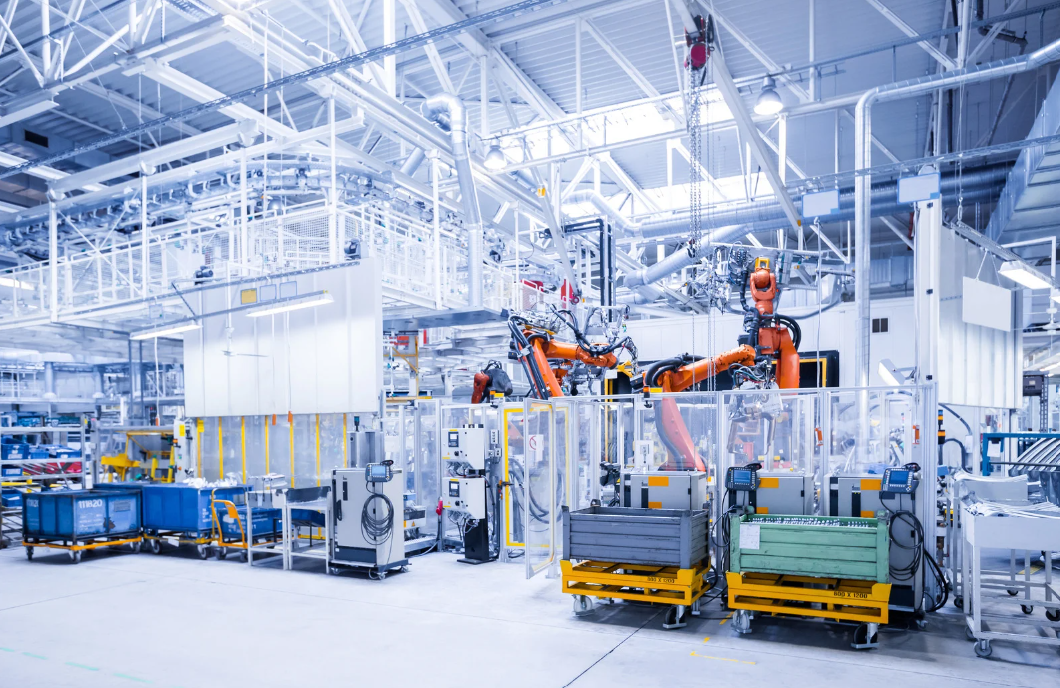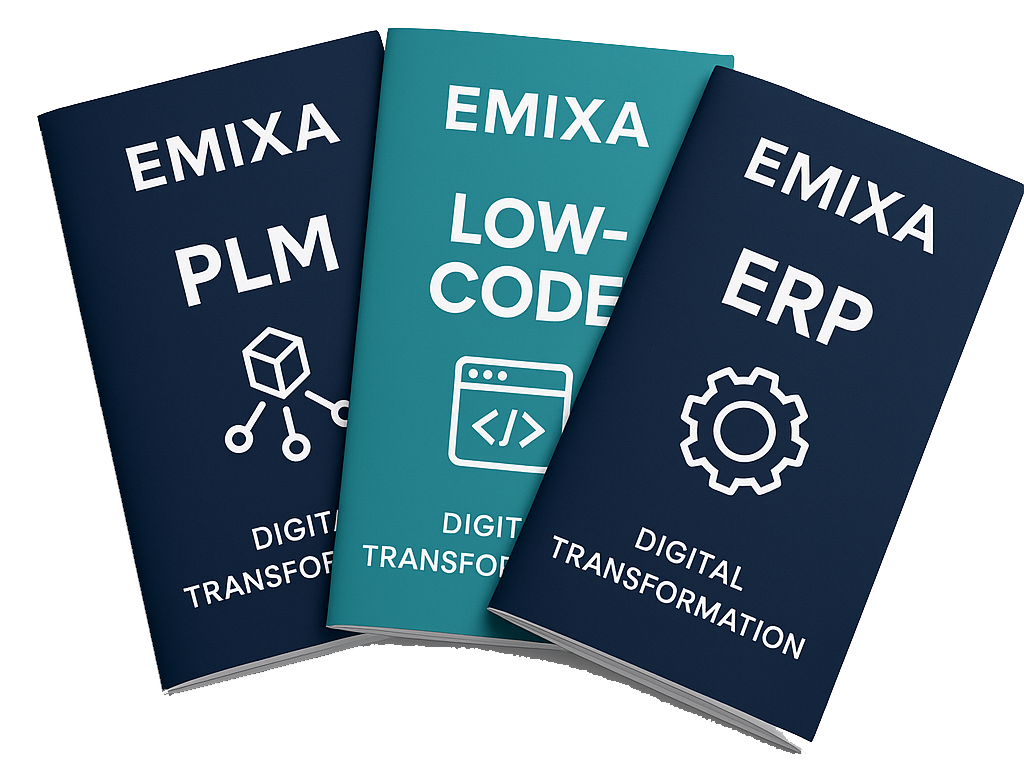From traditional manufacturing to a self-learning factory
Discover the power of Smart Manufacturing

Imagine a manufacturing environment that not only does what you say, but also thinks, learns and improves itself. That is Smart Manufacturing: the smart successor to traditional manufacturing, where technology and data work together to make the difference. No more static schedules or endless checks, but real-time insights and automatic decisions that make your processes faster, better and smarter.
Driven by industry 4.0 and the growing demand for flexibility and insight, several technologies are uniting. The Industrial Internet of Things (IIoT), AI, Machine Learning and integrated ERP and MES solutions combine to form an intelligent network. This creates an environment where machines, systems and data work together seamlessly. The result is a production process that responds smarter to changing market demands, reduces waste and monitors quality at the highest level. Smart Manufacturing links the physical factory to digital intelligence, creating an ecosystem that strengthens itself. Where previously optimisation was mainly done to reduce costs, this approach actually offers strategic advantages: innovation, customer focus and collaboration within the chain become real differentiators.
Technological innovation is an indispensable link within Smart Manufacturing. But technology alone is not enough. A successful transformation requires more: a clear strategy, efficient processes, engaged employees and reliable data that are carefully aligned. The first step towards a smart factory starts with insight. Tools like the Digital Maturity Assessment provide insight into the next steps of Smart Manufacturing. A thorough analysis that maps the organisation's digital maturity. This looks at data quality, process automation, the IT landscape and digital culture, among other things. Based on these insights, our consultants draw up a concrete growth path, tailored to the organisation's ambitions and capabilities. The result: a clear roadmap with realistic goals, measurable results and clear priorities. Aimed at a future-proof production environment.
Within this growth path, the ERP system plays a central role. Whereas ERP solutions were previously mainly used internally for process optimisation, the emphasis today is on chain cooperation and flexibility. Modern ERP systems enable real-time data sharing and process alignment with customers and suppliers, providing a strategic foundation for agility and competitiveness. Yet many organisations exploit only a limited part of the potential. Without continuous optimisation, training and further development, features become underused and value remains unused. Structural attention to updates, user adoption and system awareness ensures lasting impact and increases the added value of ERP in the long term.
As organisations continue to digitise, the importance of data-driven working increases. Modern production environments generate huge amounts of operational data. But only when that data is converted into concrete insights does real value emerge. Our Data & Analytics-team helps organisations take that step. With advanced analytics techniques, such as big data analytics, machine learning and real-time monitoring, data is translated into actionable insights. Think of applications such as predictive maintenance, early quality monitoring and continuous process improvement. This leads to lower operational costs, higher efficiency and an organisation that is better prepared for changes in the market.
A future-proof Smart Factory does not rest on one technology, but on a coherent set of smart applications. From sensors and data to self-learning systems and virtual simulations, each component contributes to a manufacturing environment that is increasingly smart, efficient and predictable.
Within a smart facotry, Industrial Internet of Things (IIoT) sensors are indispensable. These sensors act as the eyes and ears of the production environment: they continuously collect real-time data on critical parameters such as machine performance, environmental conditions and energy consumption. This data forms the basis for analyses that allow processes not only to be monitored, but also actively improved. By quickly identifying deviations and analysing patterns in the data, companies can prevent production downtime, better plan maintenance and reduce waste. This leads to lower costs, better quality and higher efficiency. The insights provided by IIoT sensors help companies take continuous steps towards an ever smarter and better-performing factory for achieving operational excellence. In this way, they directly contribute to a production environment that is flexible, predictable and future-ready. IIoT is thus not an isolated technology, but an essential part of a successful Smart Manufacturing strategy.

The application of IIoT and other digital technologies is leading to a huge increase in operational data. When this data is combined with information from systems such as ERP, MES and PLM, a rich data source is created: big data. Advanced analytical methods make it possible to structure these data streams and turn them into actionable insights. This paves the way for data-driven decision-making: choices are no longer made on the basis of assumptions, but underpinned by reliable data. This not only increases the accuracy of decisions, but also the speed and power of the organisation.
Artificial Intelligence (AI) and Machine Learning (ML) give further meaning to data. By automatically analysing large and complex data sets, recognising patterns and making predictions, these technologies enable organisations to improve processes in a targeted way. A concrete example is predictive maintenance: based on sensor data and historical trends, the system predicts when maintenance is needed even before a failure occurs. AI also adds value in quality control, for instance by automatically identifying deviations. Thanks to the self-learning ability of ML models, these applications are becoming increasingly accurate and effective.

A digital twin is a digital replica of a physical object, process or complete production environment. This virtual copy is continuously updated with real-time data from sensors, machines and systems, providing an up-to-date and reliable picture of operational reality. Within Smart Manufacturing, digital twins are a powerful tool for monitoring, simulation and optimisation. They make it possible to analyse processes in a virtual environment, test scenarios and implement improvements, without physical risks or disruption to production. Among other things, they are used for maintenance planning, configuration optimisation and digital prototyping. Combined with Product Lifecycle Management (PLM), digital twins shorten product development lead times and increase the predictability of innovations.AI and machine learning.
Within industrial organisations, Information Technology (IT) and Operational Technology (OT) traditionally operate as separate domains. IT is responsible for business applications, data processing and information flows. OT manages the control of machines, installations and production processes. This separation hampers the realisation of an integrated, data-driven production environment. In a Smart Factory, however, seamless integration between IT and OT is crucial. Connecting IT and OT systems creates an integrated ecosystem in which data flows freely and processes are controlled in real time.

Tools such as OEE-dashboards and lean manufacturing methodologies make performance transparent and linkable to strategic goals. It makes operational performance measurable, insightful and traceable to strategic KPIs, a prerequisite for continuous improvement and performance-based steering. But the power of a future-proof Smart Factory lies not only in its technology, but also in its user-friendliness. Role-based interfaces ensure that employees have immediate access to the right information. Intuitive, flexible and tailored to their tasks.
The technical basis for this integration is laid with enterprise integration platforms such as Boomi and Solace. These solutions provide secure, scalable and real-time data exchange between systems, giving organisations instant insights, faster decision-making and a solid foundation for their digital transformation.
Implementing a Smart Factory enables organisations to systematically steer towards Operational Excellence. By intelligently combining technology, data and process optimisation, it creates a future-proof production environment with direct impact on performance, quality and cost control. The move to Smart Manufacturing is thus more than a technological modernisation. It is a strategic choice that strengthens the entire business operation. Integrally connecting systems, processes and data creates an intelligent working environment in which production is faster, more efficient and more consistent.
Smart Manufacturing enables companies to extensively automate production processes, monitor them in real time and continuously improve them. This results in higher output, shorter lead times and fewer errors. A good example of this is the cooperation between Emixa and Saint-Gobain Solutions, in which an order management system based on Mendix was developed. This solution, seamlessly integrated with the production environment and equipped with MES functionality, ensured direct communication between order entry and execution. The result: more efficient handling, increased productivity and optimal process control.
Improving quality requires insight at the right time. By using Lean Manufacturing dashboards, quality indicators such as First Pass Yield (FPY) become visible in real-time. This allows operators and management to intervene immediately in case of process deviations. This data-driven approach increases the consistency of the end product, minimises scrap and speeds up the resolution of quality problems, resulting in structurally higher product quality.
By applying predictive maintenance, maintenance is carried out based on actual machine data instead of fixed maintenance intervals. This prevents unnecessary downtime, reduces maintenance costs and ensures the availability of critical equipment. This directly contributes to a more stable and cost-efficient production process.
The Smart Factory is not an end goal, but a strategic tool for structural value creation. It enables organisations to operate more agile, respond faster to market demand and shorten their time-to-market. As such, it is an essential foundation for sustainable competitiveness in an increasingly dynamic market environment.
The road to Smart Manufacturing does not start with technology, but with vision. A successful transformation requires a strategic, phased approach that carefully incorporates the existing processes, systems and organisational culture. The first step is to analyse the current situation. Where are the bottlenecks in the design and production process? By systematically identifying bottlenecks, investments can be targeted at the parts of the chain with the greatest impact. In addition, internal support is crucial. Involving all relevant stakeholders, from operational to strategic level, increases not only the acceptance but also the success of new technologies and ways of working. Sustainable change only occurs when everyone understands why it is needed and actively participates in its realisation.
Emixa supports organisations in this process with the Digital Maturity Scan, which clearly identifies the digital maturity level. Our consultants assist in drawing up a roadmap, implementing improvement initiatives and managing change. Ready for the next step? Contact us and discover what it takes to get your organisation ready for the future.
Discover the power of Smart Manufacturing
Author: Roel Kucukbiyik
Published date: December 3, 2025


We help businesses transform their digital future with cutting-edge technology and strategic products & services